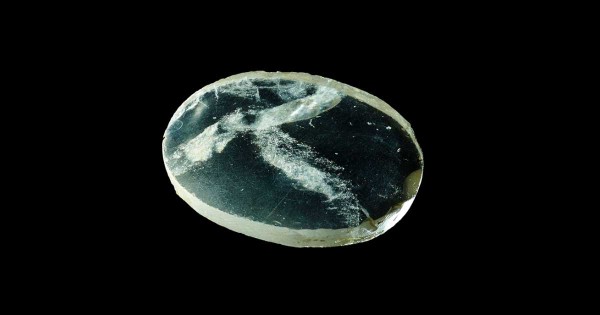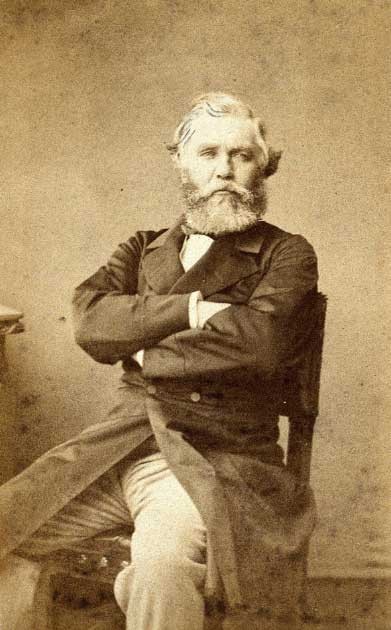
The Nimrud lens. Source: The British Museum / CC BY-NC-SA 4.0
Ishtartv.com - ancient-origins.net
By Joanna Gillan
The Nimrud lens is a 3,000-year-old piece of rock crystal unearthed by
Sir John Layard in 1850 at the Assyrian palace of Nimrud, in modern-day Iraq.
Since its discovery over a century ago, scientists and historians have debated
its use, with one prominent Italian professor claiming the lens was used by the
ancient Assyrians as part of a telescope. This was used to explain how the
Assyrians knew so much about astronomy.
Understanding the Nimrud Lens Artifact
The Nimrud lens (also called the Layard lens), which has been dated to
between 750 and 710 BC, is made from natural rock crystal and is a slightly
oval in shape. It was roughly ground, perhaps on a lapidary wheel. It has a
focal point about 11 centimeters (4.33 in) from the flat side, and a focal
length of about 12 cm (4.72 in).
These dimensions would make the Nimrud lens equivalent to a 3×
magnifying glass. Combined with another lens, it could achieve much greater
magnification. The surface of the lens was created with twelve cavities that
were opened during grinding. These would have contained naptha or some other
fluid trapped in the raw crystal. The lens is said to be able to focus
sunlight, although the focus is far from perfect.
The British Museum and the Nimrud Lens
There has been much debate over the original use of the Nimrud lens.
Some speculate that it was used as a magnifying glass, or as a burning-glass to
start fires by concentrating sunlight, while others have proposed that the lens
was part of a telescope. However, if we are to believe the British Museum’s
description, the Nimrud lens “would have been of little or no practical use.”
While they acknowledge that “this piece of rock crystal has been
carefully ground and polished, and undoubtedly has optical properties,” they
reach the unusual conclusion that the optical properties were “probably
accidental.” I wonder if the British Museum also maintains that the hundreds of
other carefully crafted and polished lenses found throughout the ancient world
were also “accidental”?
In their description, the British Museum concludes by saying that:
“There is no evidence that the Assyrians used lenses, either for magnification
or for making fire, and it is much more likely that this is a piece of inlay,
perhaps for furniture.” However, many disagree with this claim.
Hypotheses for the Purpose of the Nimrud Lens
Layard suggested that Assyrian craftsmen used the lens as a magnifying
glass to make intricate and miniscule engravings, such as those that have been
found on seals and on clay tablets using a wedge-shaped script. But experts on
Assyrian archaeology have remained unconvinced. They have claimed that the
Nimrud lens is of such low quality that it would have been a poor aid to vision.
Another hypothesis is that the lens was used as a burning glass to start
fire. Burning-glasses were known in the ancient world. Aristophanes referred to
“the beautiful, transparent stone with which they light fires” in his play The
Clouds (424 BC). Meanwhile, Pliny the Elder (23 to 79 AD) described how glass
balls filled with water could set clothes on fire when placed in line with the
sun. However, there is no clear evidence to support the theory that this was
the purpose for which the Nimrud lens was created.
Italian scientist Giovanni Pettinato of the University of Rome has
proposed that the lens was used by the ancient Assyrians as part of a
telescope. According to conventional perspectives, the telescope was invented
by Dutch spectacle maker, Hans Lippershey in 1608 AD, and Galileo was the first
to point it to the sky and use it to study the cosmos. But even Galileo himself
noted that the so-called “ancients” were aware of telescopes.
While lenses were around before the Nimrud lens, Pettinato believed this
was one of the first to be used in a telescope. The earliest lenses to have
been identified so far date back around 4,500 years to the 4th and 5th
Dynasties of ancient Egypt (e.g. the superb Le Scribe Accroupi , or Seated
Scribe, and the Kai in the Louvre), where it appears they were used as
schematic eye structures (iris/pupil inserts) associated with funerary statues.
Latter examples have been found in Knossos dated to around 3,500 years
ago. In total, there are several hundred reported lenses now on record from
around the ancient world, so it appears that the ancients knew a lot more about
lenses than some, like the British Museum, give them credit for.
Saturn’s Serpents: Evidence of Assyrian Advanced Astronomy?
One of the reasons Pettinato believed that the Assyrians used the Nimrud
lens as part of a telescope is that some of their knowledge about astronomy
seems impossible to have acquired without a telescope.
For example, the ancient Assyrians saw the planet Saturn as a god
surrounded by a ring of serpents, which Pettinato suggests was their
interpretation of Saturn's rings as seen through a telescope. However, other
experts say that serpents occur frequently in Assyrian mythology, and note that
there is no mention of a telescope in any of the many surviving Assyrian
astronomical writings.
Whatever its purpose, as an ornament, as magnifying lens, a burning
glass, or part of a telescope, the Nimrud lens certainly appears to be more
than an accident. But exactly how it was used, we may never know.

Sir Austen Henry Layard, the English Assyriologist who directed the excavations of Nimrud, where the Nimrud lens was unearthed in 1850. ( Public domain )
|